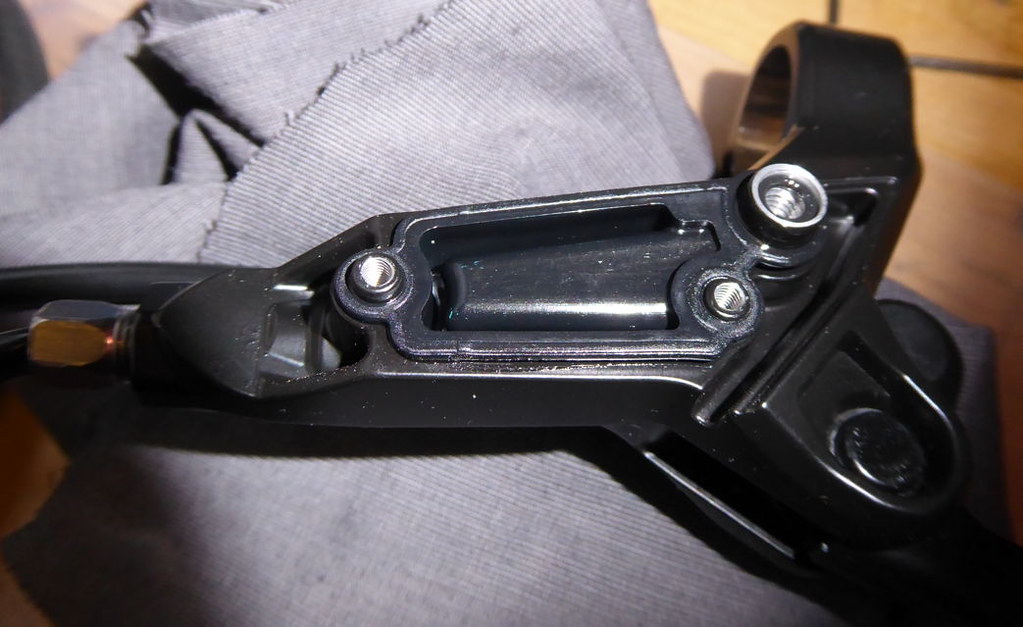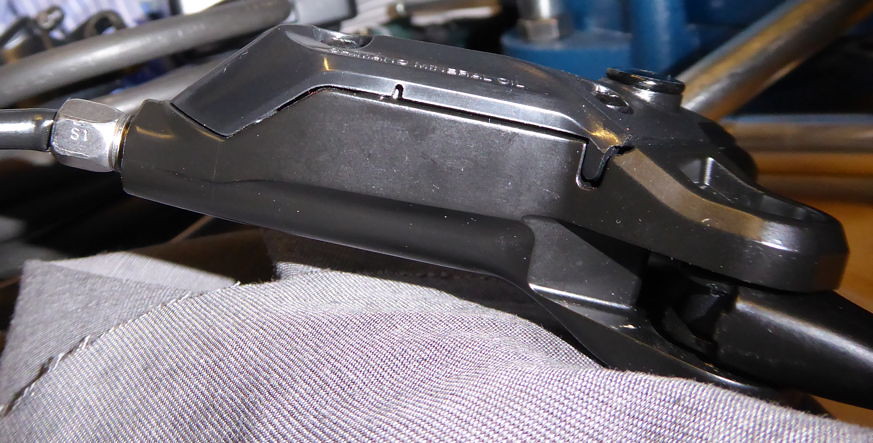I think my understanding is gradually increasing...
Is this right - as follows?
In at least some models of hydraulic brake with a reservoir (if I'm understanding some lack the reservoir)...
- it is helpful to understand that there's an active 'braking' side of the hydraulic system, and a passive 'reservoir' part of the system.
- there is free movement of fluid to/from a sealed from the air but expandable reservoir, until the brake lever is pulled
- when the brake lever is pulled it seals this reservoir from the braking side of the system so that pressure is applied through the fluid (rather than squeezing fluid into the reservoir)
- fluid is allowed into the braking side of the system once the levers are released, either because the reservoir is very slightly pressurised (basically the diaphragm above acting like a balloon) or through gravity - once the brake levers are released there should be no remaining pressure in the braking side of the system so even a small amount of pressure from the diaphragm would be enough.
There should be no air in this system.
There is no air (shouldn't be) in the reservoir.
This is fundamentally different from the central heating expansion system - because the central heating system remains pressurised at all times. The braking system has no pressure in it once the levers are released. (Gembo - despite the bike pump, air isn't being introduced in with the water in the central heating - the water expands into a balloon like system, but rather than relying on stretchy rubber to keep the water under pressure, the balloon sits in a sealed vessel, with the air in this under pressure which has been introduced by the bicycle pump. Air and water are strictly separate).
*IF* there is air in the system it would be good to get it into the reservoir, because that would improve braking performance - it being sealed off from the braking side of the system as soon as the brakes are applied. But the solution is really to get rid of this air completely - it shouldn't be there. In this circumstance then it would be bad to turn the bike upside down - simply because the air might get trapped somewhere rather than returning to the reservoir.
If there is air on the braking side of the system then it makes absolutely no difference at all where it is.
Brake performance may decline if the bike is upside down, with the levers released, because fluid drains into the reservoir, with a corresponding retraction of the brake pads away from the disk. This isn't a permanent problem - the solution is simply to turn the bike the right way up - the fluid should return to the braking side of the system. It may be that working the levers helps to prompt the fluid to return into the braking side of the system.
(If I've said 'breaking' rather than 'braking' somewhere in all that verbiage I hope you'll forgive me).
How much of that is right?

 not resolved
not resolved

 posts
posts
